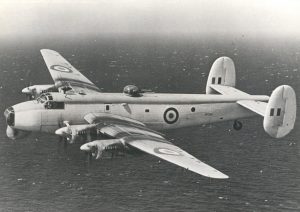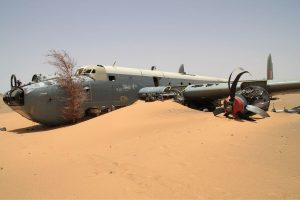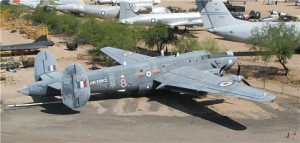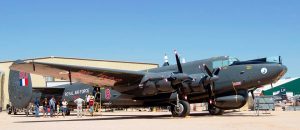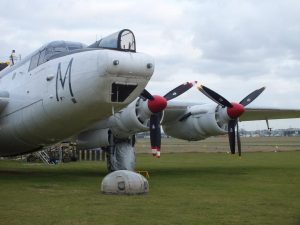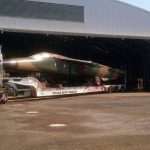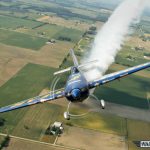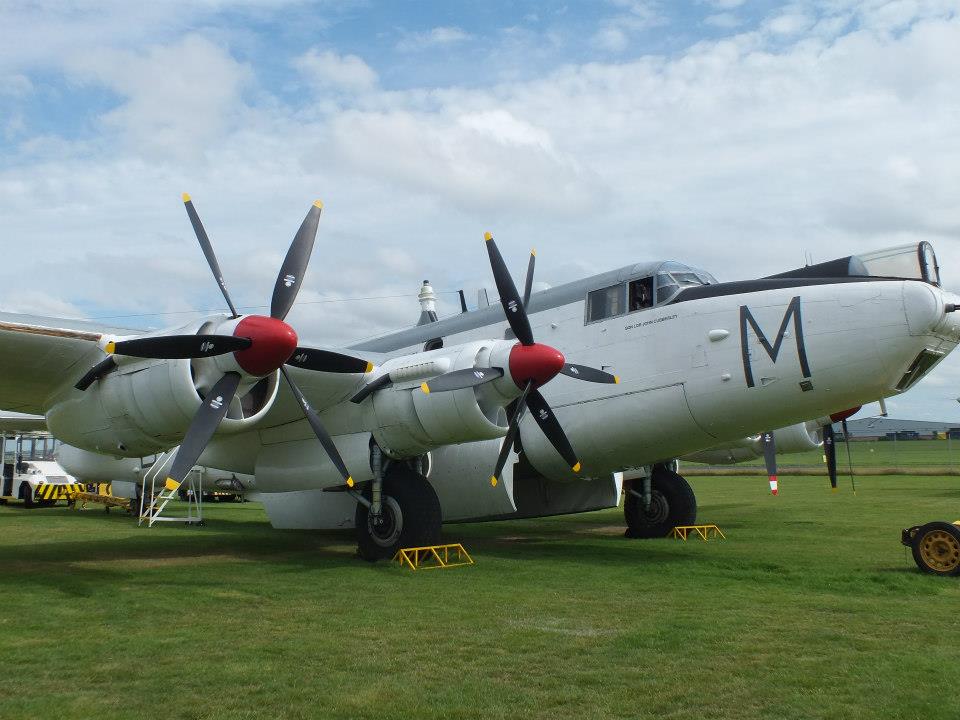
(Image Credit: SPT)
Serving the Royal Air Force (RAF) from 1951 to 1991 and the South African Air Force (SAAF) from 1957 to 1984, with a design lineage that stretches back to the Avro Lancaster bomber, the Shackleton is a venerable ‘bird with a distinguished service history. At this point in time there are not a single flying Shackleton left in the world, a situation that the UK-based Shackleton Preservation Trust (SPT) of Coventry seeks to remedy, embarking on a program that could see Shackleton MR.2 WR963 take to the skies again.
(Image Credit: BAE Systems)
Avro’s maritime reconnaissance and airborne early warning aircraft, named after the British polar explorer, first flew at Avro’s Woodford, Cheshire airfield on March 9, 1949, with Avro’s Chief test Pilot “Jimmy” Orrell in command. Designated the Avro Type 696 and designed by a team under the leadership of Roy Chadwick, deliveries of Shackletons to the RAF’s Coastal Command commenced in the following year. Initially the aircraft was to be called the Lincoln ASR.3, a nod to the aircraft’s derivation from of the Avro Lincoln bomber, which was in turn a development of the Avro Lancaster. With wings, tail, and undercarriage from the Lincoln and a fuselage loosely based on the Avro Tudor airliner, three different variants were built, the Mk1 and Mk2 both with tail-wheel undercarriage, and the Mk3 with a nose-wheel/tricycle undercarriage. Maritime reconnaissance Shackleton’s were replaced in RAF service by Nimrods, but Mk2s continued in operation alongside the jets in the airborne early-warning role.
(Image Credit: Alexei Shevelev, GNU FDL 1.2)
Post-military service, airworthy Shackletons haven’t had the best of luck. An ex-SAAF Shackleton, “Pelican 16” (SAAF 1716) was restored to flying condition in 1994, but later that same year, while on its way from South Africa to the UK, a double engine failure caused the plane to make a forced landing in the Sahara Desert. While there were no fatalities among the crew, the plane was a total loss and was abandoned in place.
The South African Air Force Museum is in possession another Shackleton, “Pelican 22” (SAAF 1722), restored and theoretically airworthy, though it’s been grounded for safety and preservation reasons as well as for lack of a qualified air and/or ground crew, though they do run the engines from time to time.
(Image Credit: Pima Air & Space Museum)
“Mr McHenry” on its unveiling day.
(Image Credit: Pima Air & Space Museum)
In 2005 Shackleton Mk2 (RAF WL790) “Mr McHenry” that had been on exhibit at the defunct Polar Aviation Museum in Blaine, Minnesota was made airworthy enough for ferrying, though the UK-based owner of the plane found himself in a difficult position. While the UK’s Civil Aviation Authority (CAA) was willing to issue a ferry permit for the aircraft to fly back home, the plane would be grounded once it arrived until a very expensive wing spar replacement was performed. The plane was ferried to the Commemorative Air Force Headquarters in Midland, Texas and languished there for two years, its owner hoping to find a buyer who never materialized. In 2007 the plane was once again prepared for what would be its last flight, this time to the Pima Air & Space Museum in Tuscon, Arizona where it was placed on public display, later undergoing a cosmetic restoration which was unveiled in May 2013.
(Image Credit: SPT)
In the effort to restore to flying condition Shackleton WR963, SPT is performing frequent engine runs, spinning up its four 2,450hp Rolls Royce Griffon 57As with their 13ft diameter contra-rotating propellers, hearing the distinctive sound that caused the Shackletons to be tagged with nickname “Growlers.” The plane has been registered as G-SKTN as the process of obtaining a CAA Permit to Fly gets underway and a huge fund-raising campaign kicks in. The aircraft is open to the public at Coventry each Saturday and the Shackleton’s Return To Flight Fund is accepting donations through the Friends of 963 Society.
We’ll be following the restoration of 963 as it progresses, bringing you updates on the efforts to turn back the years and return this Growler to the skies of England. In the meantime, here’s a video of a recent engine run on this beautiful aircraft:








